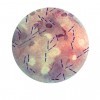Abstract
This is one in a series of fact sheets discussing common foodborne pathogens of interest to food handlers, processors, and retailers. This revised 5-page fact sheet was written by Keith R. Schneider, Renée Goodrich-Schneider, Michael A. Hubbard, and Susanna Richardson, and published by the UF Department of Food Science and Human Nutrition, January 2014.
FSHN035/FS101: Preventing Foodborne Illness Associated with Clostridium perfringens (ufl.edu)
References
Centers for Disease Control and Prevention [CDC]. 2013. Food Safety: Clostridium perfringens. Centers for Disease Control and Prevention National Center for Emerging and Zoonotic Infectious Diseases. http://www.cdc.gov/foodsafety/clostridium-perfingens.html (Last Accessed: 29 January 2014).
Birkhead, G., R. L. Vogt, E. M. Heun, J. T. Snyder, and B. A. McClane. 1988. Characterization of an Outbreak of Clostridium perfringens Food Poisoning by Quantitative Fecal Culture and Fecal Enterotoxin Measurement. Journal of Clinical Microbiology. 26(3):471-474. https://doi.org/10.1128/jcm.26.3.471-474.1988
Cornell University. 2014. Department of Microbiology-Bacterial Endospores. http://micro.cornell.edu/cals/micro/research/labs/angert-lab/bacterialendo.cfm (Last Accessed: 29 January 2014).
Dailey, N. J., N. Lee, A. T. Feischauer, Z. S. Moore, E. Alfano-Sobsey, F. Breedlove, A. Pierce, A. Ledford, S. Greene, G. A. Gómez, D. F. Talkington, M. J. Sotir, A. J. Hall and D. Sweat. 2012. Clostridium perfringens Infections Initially Attributed to Norovirus, North Carolina, 2010. Clinical Infectious Diseases. 55(4):568-570. https://doi.org/10.1093/cid/cis441
Grass, J. E., L. H. Gould, and B. E. Mahon. 2013. Epidemiology of Foodborne Disease Outbreaks Caused by Clostridium perfringens, United States, 1998-2010. Foodborne Pathogens and Disease. 10(2):131-135. https://doi.org/10.1089/fpd.2012.1316
Food and Drug Administration [FDA]. 2009. "FDA 2009 Food Code - Table of Contents." http://www.fda.gov/Food/FoodSafety/RetailFoodProtection/FoodCode/FoodCode2009/default.htm (Last Accessed: 29 January 2014)
Murray, P. R., E. J. Baron, J. H. Jorgensen, M. L. Landry, and M. A. Pfaller, eds. 2007. Manual of Clinical Microbiology (9th ed.). Washington DC: ASM Press.
Scallan, E., R. M. Hoekstra, F. J. Angulo, R. V. Tauxe, M-A. Widdowson, S. L. Roy, J. L. Jones, and P. M. Griffin. 2011. Foodborne Illness Acquired in the United States-Major Pathogens. Emerging Infectious Diseases. 17(1):7-15. https://doi.org/10.3201/eid1701.P11101
Scharff R., J. McDowell, and L. Medeiros. 2009. Economic cost of foodborne illness in Ohio. Journal of Food Protection. 72(1):128-136. https://doi.org/10.4315/0362-028X-72.1.128

